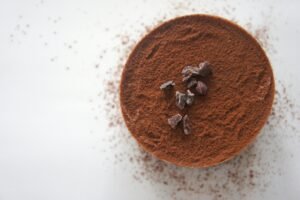Step-by-Step Guide to Starting a Sugar Detox:
In today’s health-conscious world, embarking on a sugar detox is one of the most effective ways to improve overall well-being. Excessive sugar consumption is linked to a variety of health issues, including obesity, diabetes, heart disease, and energy fluctuations. A sugar detox can help reset your body, improve energy levels, and promote weight loss. This comprehensive guide will walk you through the steps to start a successful sugar detox.
Understanding the Need for a Sugar Detox:
Before diving into the steps, it’s important to understand why a sugar detox is beneficial. Refined sugar is pervasive in many diets, often hidden in processed foods and beverages. Overconsumption can lead to insulin resistance, increased fat storage, and inflammation. Eliminating sugar gives your body a chance to reset and heal.
Preparing for Your Sugar Detox:
Evaluate Your Current Diet:
Begin by evaluating your current diet. Track your food intake for a few days, noting the amount of sugar you consume. This includes obvious sources like sweets and sodas, as well as hidden sugars in foods like bread, sauces, and pre-packaged meals.
Set Realistic Goals:
Setting realistic goals is crucial for success. Determine whether you want to cut out all forms of sugar, including natural sugars found in fruits and dairy, or if you plan to eliminate only added sugars. A gradual approach might be more sustainable than quitting cold turkey.
Plan Your Meals:
Meal planning is key to avoiding the temptation of sugary snacks. Prepare a weekly menu that focuses on whole foods, including vegetables, lean proteins, and healthy fats. Having a plan will help you stay on track and ensure you have sugar-free options readily available.
Remove Temptations:
Go through your pantry and refrigerator and remove any sugary foods. Replace them with healthy alternatives like nuts, seeds, and fresh fruits. If the temptation isn’t there, you’re less likely to indulge.
Starting Your Sugar Detox:
Day 1: Hydrate and Nourish:
Start your detox by drinking plenty of water. Hydration is essential for flushing out toxins. Aim for at least eight glasses a day. Complement your hydration with nutrient-dense meals to keep your energy levels stable.
Day 2-3: Combat Cravings:
Sugar cravings can be intense in the first few days. Combat them by eating small, frequent meals that include protein and fiber. These nutrients help keep you full and reduce cravings. Herbal teas and natural sweeteners like stevia can also be helpful during this phase.
Day 4-7: Adjust and Adapt:
By the end of the first week, your body will start adjusting to the lower sugar intake. Focus on balanced meals and continue to hydrate. You may notice improved energy levels and mood as your body adapts.
Maintaining a Sugar-Free Lifestyle:
Introduce Natural Sugars Slowly:
Once you’ve completed your initial detox phase, you can gradually reintroduce natural sugars from fruits and dairy. Pay attention to how your body responds and continue to avoid processed sugars and artificial sweeteners.
Stay Active:
Physical activity is a great way to boost your detox efforts. Regular exercise helps regulate blood sugar levels and reduces stress, which can be a trigger for sugar cravings. Aim for at least 30 minutes of moderate exercise most days of the week.
Monitor Your Progress:
Keep a journal to monitor your progress and note any changes in your health, energy levels, and mood. This will help you stay motivated and make adjustments as needed.
Seek Support:
Consider joining a support group or finding a detox buddy. Sharing your journey with others can provide motivation, accountability, and encouragement.
Healthy Alternatives to Sugar:
Fruits:
Fruits are a natural and nutritious way to satisfy your sweet tooth. Berries, apples, and citrus fruits are particularly high in fiber and low in sugar.
Honey and Maple Syrup:
If you need a sweetener, opt for natural choices like honey and maple syrup. These contain beneficial nutrients and have a lower glycemic index compared to refined sugar.
Stevia:
Stevia is a plant-based sweetener that provides sweetness without the calories or blood sugar spikes associated with sugar.

Potential Challenges and How to Overcome Them:
Dealing with Withdrawal Symptoms:
It’s common to experience withdrawal symptoms such as headaches, irritability, and fatigue when you first cut out sugar. These symptoms usually subside within a few days. Staying hydrated, getting plenty of rest, and consuming balanced meals can help alleviate these symptoms.
Handling Social Situations:
Social events often revolve around food, which can be challenging during a sugar detox. Prepare by eating a healthy meal beforehand and bring a sugar-free dish to share. Don’t be afraid to explain your dietary choices to friends and family.
Staying Motivated:
Motivation can wane over time. Keep your end goals in mind, such as improved health and energy levels. Celebrate small victories and remind yourself of the reasons you started the detox.
The Long-Term Benefits of a Sugar Detox:
Completing a sugar detox can lead to numerous long-term benefits. These include improved weight management, better blood sugar control, enhanced mood, clearer skin, and reduced risk of chronic diseases. Maintaining a low-sugar diet can promote overall health and well-being.
Recipes for a Sugar Detox:Breakfast: Avocado and Egg Breakfast Bowl:Ingredients:
- 1 ripe avocado
- 2 eggs
- 1 cup baby spinach
- 1 tablespoon olive oil
- Salt and pepper to taste
- Optional: a sprinkle of chili flakes or herbs
Instructions:
- Heat the olive oil in a pan over medium heat.
- Add the baby spinach and sauté until wilted.
- While the spinach is cooking, slice the avocado in half and remove the pit.
- Crack the eggs into the pan with the spinach and cook to your preferred doneness.
- Arrange the avocado halves on a plate, and fill the pit hole with the sautéed spinach and eggs.
- Season with salt, pepper, and optional chili flakes or herbs.
Lunch: Quinoa and Vegetable Salad:
Ingredients:
- 1 cup cooked quinoa
- 1 cup cherry tomatoes, halved
- 1 cucumber, diced
- 1 bell pepper, diced
- 1/4 cup red onion, finely chopped
- 1/4 cup fresh parsley, chopped
- 2 tablespoons olive oil
- Juice of 1 lemon
- Salt and pepper to taste
Instructions:
- In a large bowl, combine the cooked quinoa, cherry tomatoes, cucumber, bell pepper, red onion, and parsley.
- In a small bowl, whisk together the olive oil, lemon juice, salt, and pepper.
- Pour the dressing over the salad and toss to combine.
- Serve chilled or at room temperature.
Dinner: Baked Salmon with Asparagus:
Ingredients:
- 2 salmon fillets
- 1 bunch asparagus, trimmed
- 2 tablespoons olive oil
- 2 cloves garlic, minced
- Juice of 1 lemon
- Salt and pepper to taste
Instructions:
- Preheat your oven to 375°F (190°C).
- Place the salmon fillets and asparagus on a baking sheet.
- Drizzle with olive oil and lemon juice, and sprinkle with minced garlic, salt, and pepper.
- Bake for 20-25 minutes, or until the salmon is cooked through and the asparagus is tender.
- Serve immediately.
How long does it take to detox from sugar:
The duration of a sugar detox can vary from person to person, but it typically takes about 10-14 days to significantly reduce sugar cravings and reset your taste buds. Some individuals may start feeling the benefits within a few days, while others might need a few weeks.
Can I eat fruit during a sugar detox:
Whether to include fruit during a sugar detox depends on the strictness of your detox plan. Some detox programs allow low-sugar fruits like berries, while others recommend avoiding all fruits initially. If you do include fruit, choose options that are high in fiber and low in sugar.
What are the symptoms of sugar withdrawal:
Common symptoms of sugar withdrawal include headaches, fatigue, irritability, and cravings. These symptoms are usually temporary and can be managed with proper hydration, balanced meals, and adequate rest.
Is it safe to detox from sugar:
Yes, detoxing from sugar is generally safe for most people. However, if you have any underlying health conditions or are concerned about potential side effects, it’s best to consult with a healthcare professional before starting a sugar detox.
How can I maintain a low-sugar diet after the detox:
To maintain a low-sugar diet, continue to focus on whole foods and avoid processed foods and beverages that contain added sugars. Read labels carefully, choose natural sweeteners in moderation, and stay mindful of your overall sugar intake.

Conclusion:
Embarking on a sugar detox is a powerful step towards better health. By understanding the reasons for detoxing, preparing adequately, and following a structured plan, you can successfully reduce your sugar intake and enjoy the benefits of a healthier lifestyle. Remember, the key to a successful detox is patience, consistency, and support.















